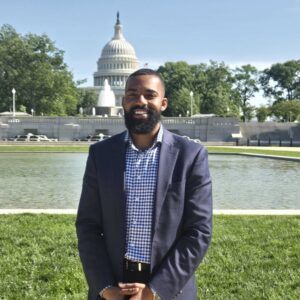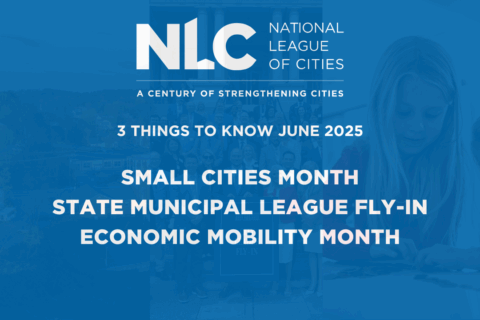Widening the Window: An Approach to Leading Through Stress & Managing Trauma
This vlog is part of NLC’s “Leading in the Moment” series, which focuses on the impact that mindfulness can have on leaders in local government and beyond. In this installment, NLC University’s Dana D’Orazio sat down with Dr. Elizabeth Stanley, professor of Security Studies at Georgetown University and creator of the Mindfulness-based Mind Fitness Training program.
I recently had the opportunity to meet with Dr. Elizabeth Stanley, professor of Security Studies at Georgetown University, veteran and award-winning author. She is also a researcher and the creator of the research-backed Mindfulness-based Mind Fitness Training (MMFT) program.
In our discussion, we explored her recently published book, Widening the Window: Training Your Brain and Body to Thrive During Stress and Recover from Trauma, and what her work and research mean for today’s leaders. Her strategies and methods have been rigorously studied and deployed in multiple sectors, including the military and the U.S. Department of Defense.
Coping with stress and trauma, seeking resiliency and managing uncertainty while trying to lead has always been difficult, but has become even more so with the advent of the COVID-19 pandemic and increasing polarization of the nation. Dr. Stanley shares not just strategies for navigating stress and trauma, but also the scientific reasoning for why it’s happening in the first place. She shares the perspective that to begin to tackle these challenging factors, we first have to understand that we are not a self only in the moment but a self that is made up of many experiences. Even in the present, we bring our past with us and we continue to act on patterns and habits that we may not even be aware we are using as our operating manual. This awareness is critical to beginning to unpack and proactively take steps towards managing and leading through stress, as well as recovering from our trauma and past stressors.
Dr. Stanley shares how our stressors take many different forms, from big life events or trauma to the day-to-day sense of overwhelm and conflicts in the office or home. Our society often chalks up these day-to-day stressors as part of the job, but as Dr. Stanley outlines in her work, these stressors accumulate, and if they’re not intentionally dealt with, can lead to a continual decrease in our ability to make decisions, interact with others and ultimately lead. Stress is not just something we unplug, take a nap or break from, it’s a very real reaction in our bodies and minds that we have to pay attention to, manage and recover from, or we’ll just continue experiencing fatigue, an inability to concentrate and other factors of our stress cycles.
Dr. Stanley uses the image of a window to explain stress and trauma’s impacts on our minds. We each have a window that is the basis by which we operate day-to-day. The key is how wide or narrow that window is. During stressful events, the wider the window, the more access we have to executive functioning like decision-making as well as social competencies like collaboration and connection to others. The narrower the window, the less access we have to our executive functioning and the more likely we are to experience an “us versus them” mindset, which is the antithesis of civil discourse. We’re also more likely to have a predisposition for negative bias; be unable to see the full scope of information or situation in front of us (and therefore make a less informed decision) and be less inclined to connect or collaborate with others. These key functions and abilities are all required competencies of positive, impactful and intentional leadership. The narrower our window, the less able and effective we are at leading — and the research Dr. Stanley has done with the military and the Department of Defense supports this thought. This is the very reason her work has been deployed in multiple military and high-stress organizational settings. Stress, uncertainty and trauma are givens, but how we understand and recover from them can shift and make all the difference in critical decisions and leadership situations.
At the heart of becoming aware of our window and the internal (behaviors, beliefs, trauma) and external factors (stressors, events) impacting its width is claiming our agency and choice. It’s having the agency to choose how we respond, show up, interact and make decisions and ultimately lead. Lastly, the leadership imperative beyond individual agency and choice is also how this awareness of our window impacts those around us. As a leader, the status of your window is not just a personal factor but one that has a larger ripple effect on others’ windows, stress and ability to execute their own work.
Dr. Stanley and I discussed and outlined a few resources to start your journey. To begin, it’s a commitment to become aware of your window and train your mind, and itcan take as little as 12 minutes a day. Here’s how to start:
- Listen to our conversation.
- Grab a copy of Dr. Stanley’s book to delve into the studies, as well as the two foundational practices of MMFT.
- Share your email here to be the first to know about more NLC University opportunities to practice and bring mindfulness to your work and community.








